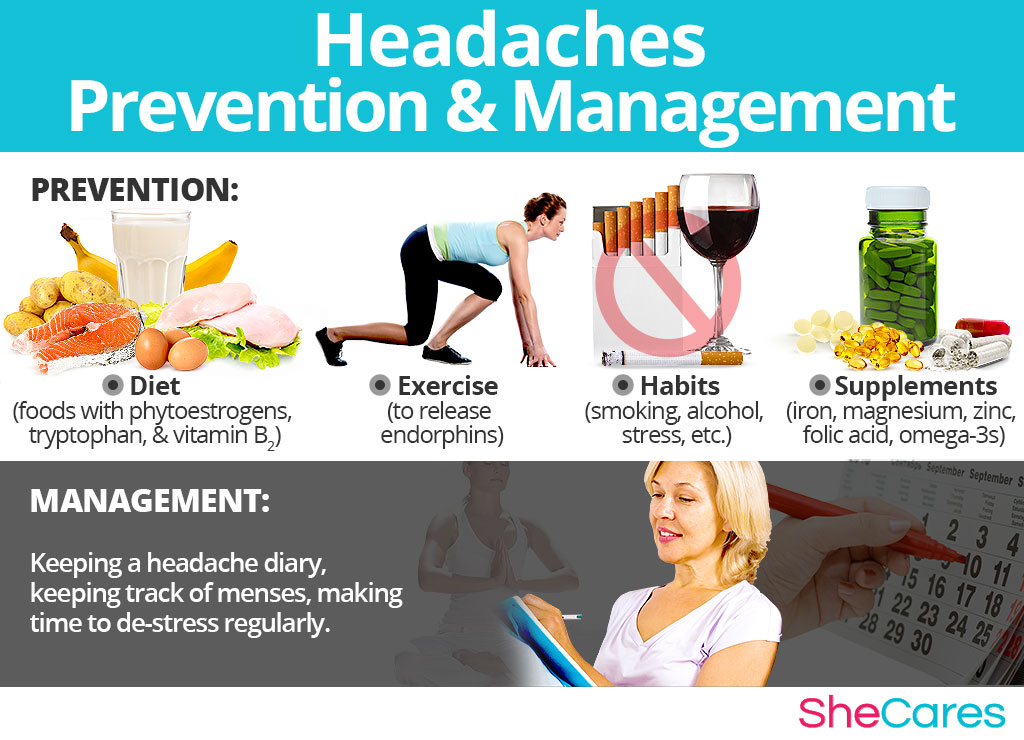Prevention:
The #1 way to prevent cervicogenic headaches (HA’s), or HA’s that begin in the neck or base of the skull, is good posture! This includes keeping your head back with your ears directly over your shoulders, especially while using a computer or mobile device, as well as while driving. When we assume a forward head posture, the stress and strain that’s placed on the structures of our cervical spine (neck) is significantly increased.

There are currently no treatments available that can cure cluster headache, but treatments have become more effective over the last decade. Over-the-counter painkillers such as aspirin. Headache Relief and Treatment for Migraine Headaches. The pain from migraine headaches can be a severe, throbbing pain that can last for many days. Many people that suffer from migraines have a family history of migraine headaches. Effective treatment for migraine headaches include: Rest in a quiet, dark room; Hot or cold compresses; Massage. Read 'The Prevention and Treatment of Headaches' by Guy Deloeuvre available from Rakuten Kobo. Everyone knows what a headache feels like. The pain can take many forms. For example, your head being trapped in vise; a.
Good work station ergonomics is also key to sitting (or standing) with good posture. Be sure your low back is well supported while seated, and that your elbows are bent 90 degrees while using a keyboard. Most importantly, position your monitor so that your eyes are level with the top 1/3 of the screen. If you use a laptop for longer than 30 minutes at a time, consider getting a docking station and an external monitor and keyboard.

Another way to prevent HA’s is by maintaining good mobility via regular stretching and cardiovascular (CV) exercise. You should try to stretch all of the muscles in the front, side and back of your neck at least 3x/week. Be sure to hold these stretches for a minimum of 30 seconds, repeat each twice, and never stretch to the point of pain.
The American Heart Association recommends 150 minutes of CV exercise per week, such as 30 minutes, 5x/week. Among its MANY benefits, CV exercise helps to increase the mobility of all of your joints by increasing your blood supply. This, in turn, increases the amount of oxygen and nutrition that is supplied to the muscles and joints of your neck (as well as all other areas of your body).
The Prevention And Treatment Of Headaches Dizziness
Treatment:
The first thing to do to relieve cervicogenic HA’s is to release the tight muscles at the base of your skull, as this is oftentimes a major contributor. Place a rolled up hand towel under your neck while lying on your back. Next, place two tennis balls in a sock and position them directly under the base of your skull. Maintain this position for at least 5 minutes, until these muscles begin to relax.

New Cluster Headache Treatment
Once you’ve release these tight muscles, you then need to activate themby performing repeated chin tucks (i.e. deep neck flexor head nods). After removing the tennis balls, your head should lie flat on the floor or mattress with no pillow under your head. Next, perform 10 chin tucks for 10 seconds each. A physical therapist can best teach you how to properly and effectively perform this exercise. Research shows that repeated chin tucks are the most effective way to reduce cervicogenic HA’s by “waking up” your deep neck flexors, which are your primary cervical (neck) stabilizers. Traumatic injuries such as whiplash can cause these muscles to become inhibited, or “go to sleep”. This increases the stress, strain and load on all of the structures of your neck, which in turn leads to HA’s. By performing these exercises 1-2x daily, you teach these muscles how to fire again, thus decreasing the amount of load on the cervical spine. This, in turn, decreases cervicogenic HA’s!